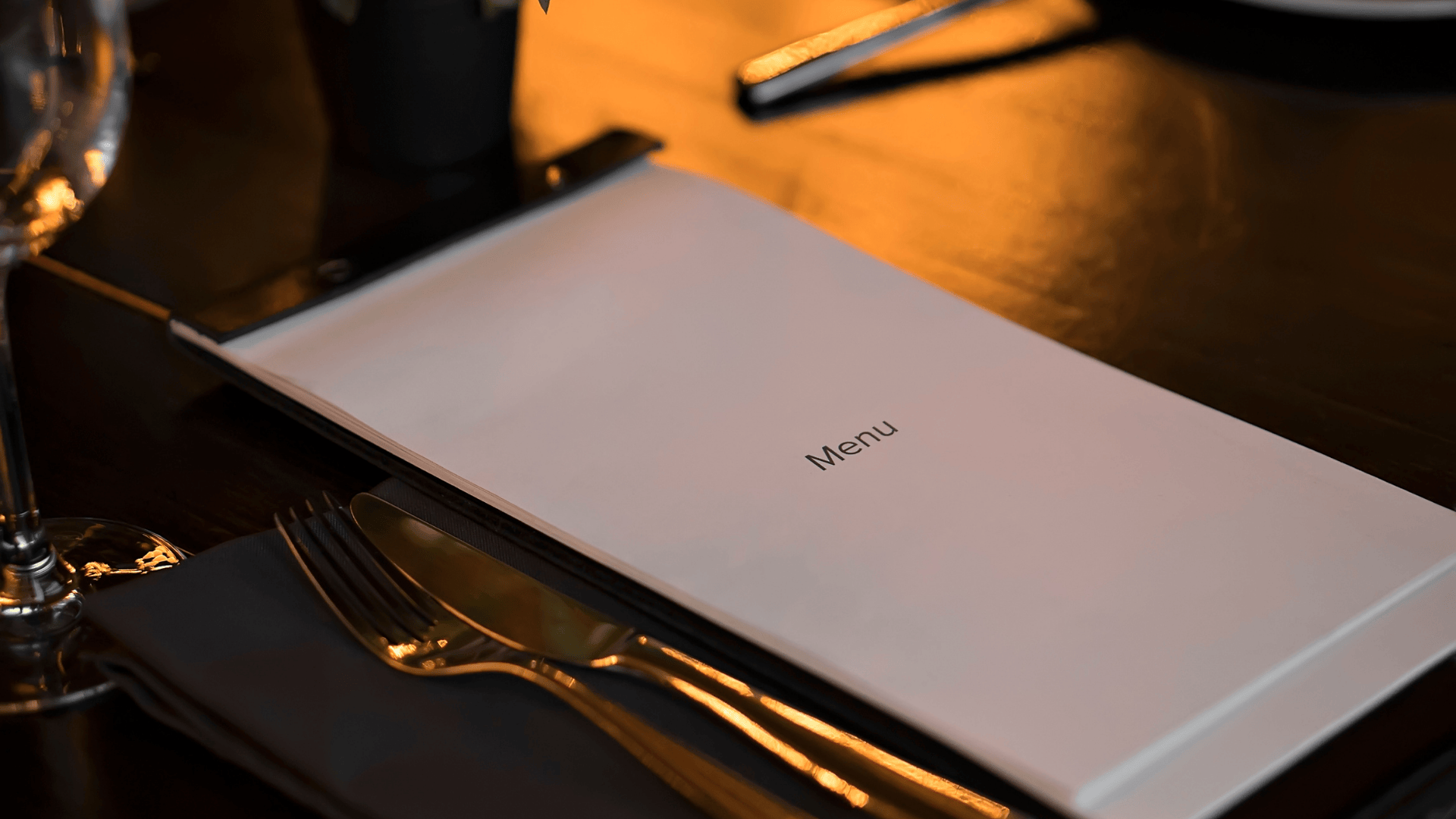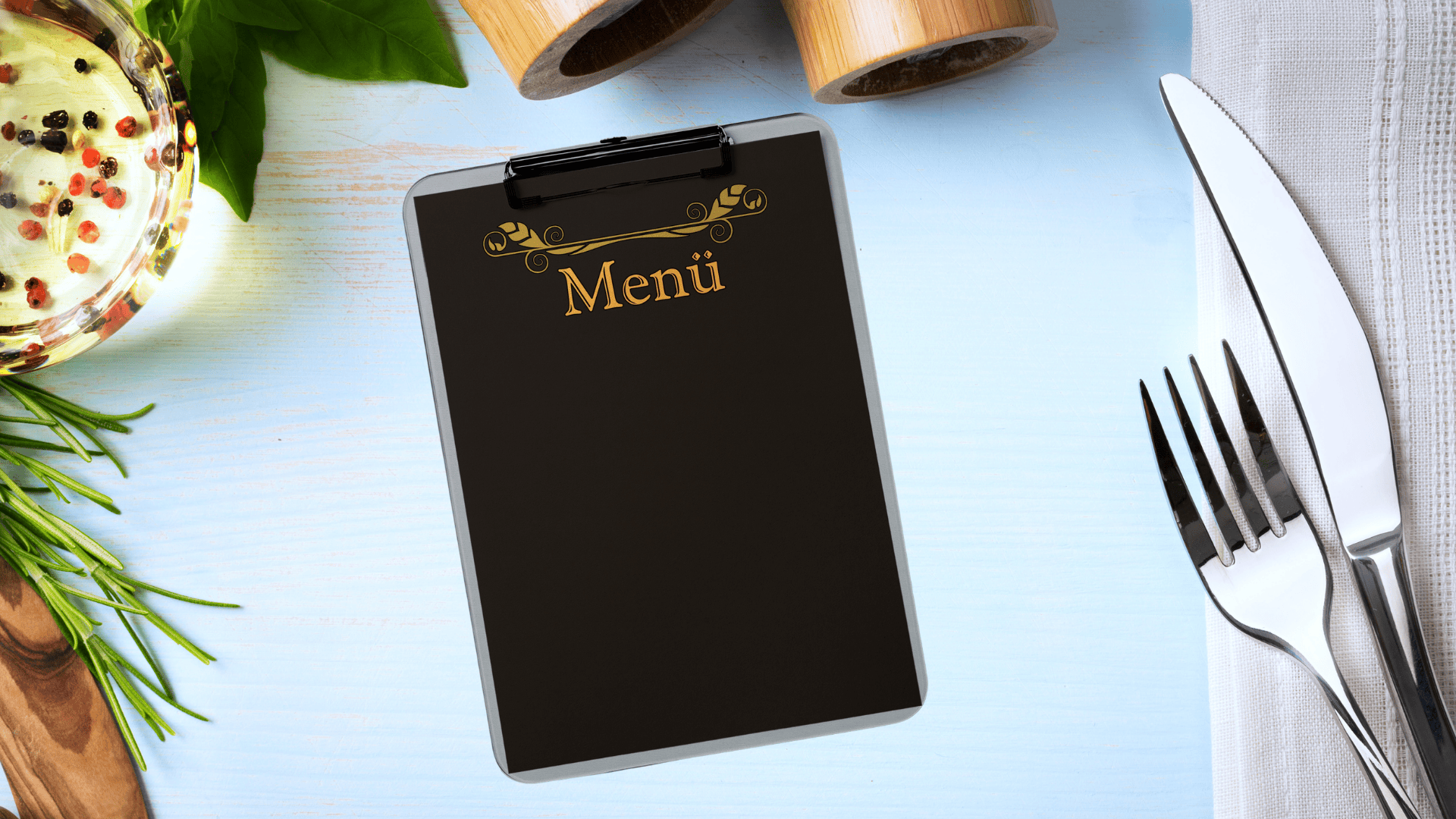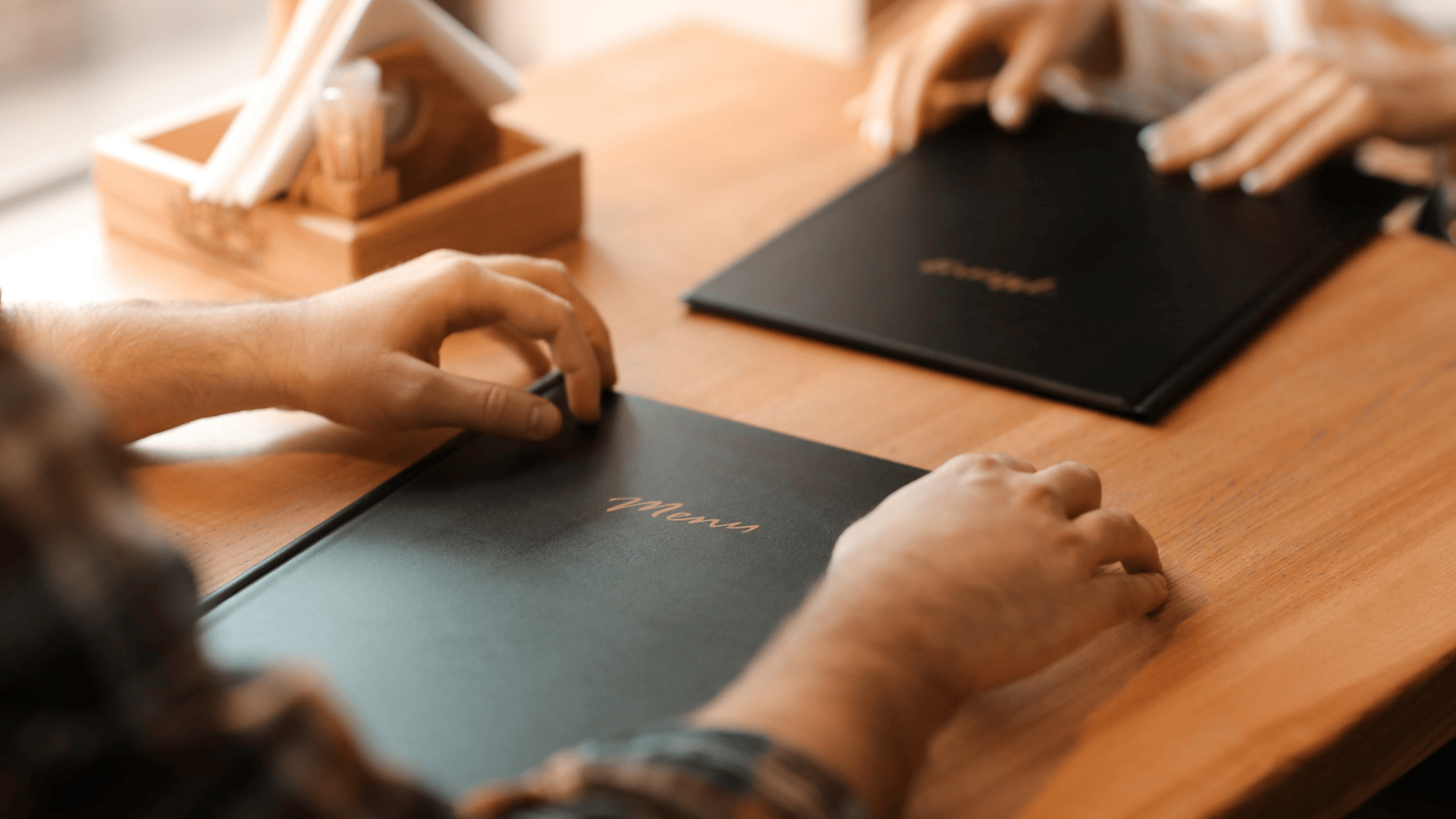That menu sitting in your guests’ hands? It’s doing much more than listing dishes—it’s silently shaping their entire perception of your restaurant. The weight, texture, design, and presentation of your menu covers create immediate sensory cues that tell diners what kind of experience to expect. Smart restaurateurs know this physical touchpoint deserves just as much creative attention as your signature dishes.

The Psychology Behind Effective Custom Menu Designs
Ever wonder why certain dishes sell better than others despite similar ingredients or prices? The layout of your custom menu designs might hold the answer.
Diners scan menus in predictable patterns—often focusing first on the upper right corner before moving in a “Z” pattern across the page. Savvy menu engineers place high-profit items in these visual hotspots. Color choices trigger specific responses too: reds and oranges stimulate appetite while blues suggest freshness, particularly effective for seafood establishments.
Typography speaks volumes without saying a word. A French bistro might employ elegant script fonts that evoke Parisian charm, while a modern fusion restaurant might opt for clean, minimalist typefaces. These subtle, stylish menu solutions work on guests’ subconscious, reinforcing your concept before they’ve taken a single bite.
Restaurant Menu Display Ideas That Make Lasting Impressions
Standard bifold menus work fine, but unexpected formats can transform how guests engage with your offerings:
Wall-mounted blackboards with chalk calligraphy create rustic charm for farm-to-table concepts. Wooden menu boards with changeable letterpress cards feel craftsman-inspired for brewpubs or artisanal eateries. Even simple clipboard presentations with quality cardstock can feel fresh and contemporary when thoughtfully executed.
Lighting deserves careful consideration when planning unique menu displays. Nothing frustrates diners more than squinting at menu text in romantic-but-too-dim lighting. Strategic spotlighting or backlit menus solve this problem elegantly while adding visual drama to the table setting.
Some restaurants now incorporate tactile elements—textured papers, embossed logos, or even scented inks that hint at signature flavors—turning menus into multi-sensory experiences that guests remember long after the meal ends.
Selecting the Perfect Menu Covers
The materials housing your culinary narrative should reflect your restaurant’s personality while standing up to daily handling. High-end steakhouses often select leather-bound menu covers that develop a rich patina over time. Contemporary lounges might choose brushed metal or acrylic options that feel sleek and modern in diners’ hands.
Waterfront restaurants benefit from marine-grade vinyl menu covers that resist moisture while maintaining a sophisticated appearance. Plant-based restaurants increasingly choose recycled or upcycled materials that align with their sustainability mission.
Think about durability versus replacement frequency. Some restaurants intentionally change personalized menu covers seasonally as part of their marketing strategy, while others invest in premium materials built to last years. This practical consideration should influence your material selection as much as your aesthetic preferences.

Custom Menus as Restaurant Decor Ideas
Smart design thinking treats menus as integral elements of your overall interior scheme rather than afterthoughts. Wine lists displayed in illuminated wall niches become functional art pieces. Oversized menus hung as wall decor create visual interest while showcasing your culinary philosophy.
Seasonal menu designs offer opportunities to refresh your space without major renovation expenses. Spring menus might feature botanical illustrations that echo fresh herb centerpieces, while autumn editions incorporate warm colors that complement changing décor elements. These synchronized details enhance restaurant ambiance while keeping regular customers engaged with evolving visual experiences.
Some restaurants create Instagram-worthy menu presentations—from menus printed on vintage record sleeves for music-themed establishments to miniature menus attached to toy cars at retro diners. These unique menu displays become social media moments that extend your marketing reach organically.
From Concept to Custom Menu Design Reality
Translating your vision into tangible menus requires thoughtful planning. Start by collecting inspiration that captures your concept’s essence—interior photos, brand elements, competitor examples, and other visual references that communicate your aesthetic goals.
Consider implementation costs holistically. Basic laminated menus might cost $3-8 each, while premium leather-bound versions range from $25-60 apiece. Volume discounts can significantly reduce per-unit costs, making quality, stylish menu solutions more accessible than initial quotes might suggest.
When selecting design partners, restaurant-specific experience matters tremendously. Menu designers familiar with hospitality understand food photography direction, item descriptions that drive sales, and practical concerns like cleanability and storage. This specialized expertise typically delivers a stronger ROI than working with general graphic designers.

Does Your Menu Design Deliver?
Concrete metrics help quantify the impact of your menu redesign investment:
- Track specific high-margin item sales before and after redesign
- Monitor average check size changes
- Note the frequency of add-on purchases like appetizers or desserts
- Observe how long guests spend reading menus
- Calculate replacement/cleaning costs compared to previous designs
Collect feedback systematically through brief table-side conversations, comment cards specifically addressing menu design, and social media monitoring. Pay special attention to first-time visitors’ reactions to your custom menu designs, as they lack previous experiences against which to compare.
Remember that benefits extend beyond immediate sales impact—quality designs reduce replacement costs, strengthen brand perception, and enhance restaurant ambiance in ways that build long-term customer loyalty.
Menus as Experience Architects
Your menu functions as both a practical information source and a powerful brand statement. These physical extensions of your restaurant’s personality deserve strategic thought and appropriate investment. By applying insights from psychology, materials science, display innovation, and performance measurement, ordinary menus transform into extraordinary elements of your restaurant’s identity.
Examine your current menus with a fresh perspective. Do they merely list offerings, or do they authentically reflect the care and creativity that define your culinary approach? In restaurants, success emerges from countless thoughtfully orchestrated details, and your menu design plays a starring role in that sensory symphony.

Founder Dinis Guarda
IntelligentHQ Your New Business Network.
IntelligentHQ is a Business network and an expert source for finance, capital markets and intelligence for thousands of global business professionals, startups, and companies.
We exist at the point of intersection between technology, social media, finance and innovation.
IntelligentHQ leverages innovation and scale of social digital technology, analytics, news, and distribution to create an unparalleled, full digital medium and social business networks spectrum.
IntelligentHQ is working hard, to become a trusted, and indispensable source of business news and analytics, within financial services and its associated supply chains and ecosystems










